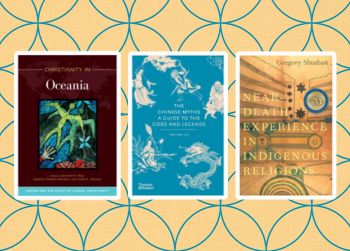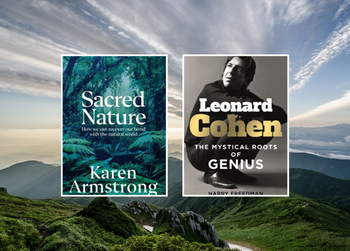The history of cults in Aotearoa New Zealand and around the world is a fascinating one. How do people get caught up in cults? What triggers a cult to form? When is an organisation or religion categorised as a cult? If the topic interests you, we have several excellent books for you to read.
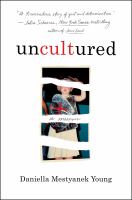 Uncultured : a memoir / Mestyanek Young, Daniella
Uncultured : a memoir / Mestyanek Young, Daniella
“Behind the tall, foreboding gates of a commune in Brazil, Daniella Mestyanek Young was raised in the religious cult The Children of God, also known as The Family, as the daughter of high-ranking members. Beholden to The Family’s strict rules, Daniella suffers physical, emotional, and sexual abuse-masked as godly discipline and divine love-and is forbidden from getting a traditional education. At fifteen years old, fed up with The Family and determined to build a better and freer life for herself, Daniella escapes to Texas.” (Adapted from Catalogue)
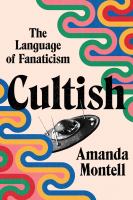 Cultish : the language of fanaticism / Montell, Amanda
Cultish : the language of fanaticism / Montell, Amanda
“What causes people to join– and more importantly, stay in– extreme groups? The answer, Montell believes, has nothing to do with freaky mind-control wizardry or Kool-Aid. She argues that the key to manufacturing intense ideology, community, and us/them attitudes all comes down to language. In both positive ways and shadowy ones, cultish language is something we hear– and are influenced by– every single day. Montell exposes the verbal elements that make a wide spectrum of communities “cultish.” In doing so, she reveals how they even pervade our modern start-ups, Peloton leaderboards, and Instagram feeds.” (Catalogue)
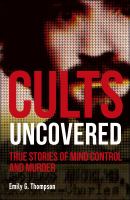 Cults uncovered : true stories of mind control and murder / Thompson, Emily G.
Cults uncovered : true stories of mind control and murder / Thompson, Emily G.
“Discover the shocking truth about some of the most disturbing cults that have ever existed–cults led by psychopaths such as Charles Manson, David Koresh, and Jim Jones that have exploded into acts of appalling savagery and evil. Explores these and many more bizarre and frightening cases to reveal terrifying stories of manipulation, coercion, abuse, and murder.” (Catalogue)
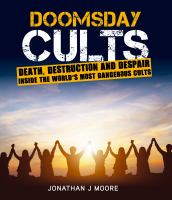 Doomsday cults : death, destruction and despair : inside the world’s most dangerous cults / Moore, Jonathan J
Doomsday cults : death, destruction and despair : inside the world’s most dangerous cults / Moore, Jonathan J
“Doomsday Cults: death, destruction and despair shows how different people throughout the ages used the Biblical texts as the fount of their philosophy. Rather than leading to peace and redemption, their interpretations led to death, destruction and despair.” (Catalogue)
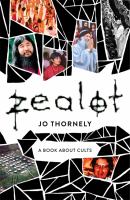 Zealot : a book about cults / Thornely, Jo
Zealot : a book about cults / Thornely, Jo
“People are drawn to cults for a number of reasons, but commonly they attract people whose current religion or lifestyle is lacking — it’s too restrictive, it’s not restrictive and holy enough; it doesn’t seem to offer solutions for a chaotic and dangerous world… Whatever the drawcard, once people are in, it’s usually very difficult for them to leave. From the Jonestown cult Kool-Aid drinkers to the Australian cult The Family to The Branch Davidians, this is book is a wide-sweeping look at cults around the world based on the popular podcast Zealot.” (Adapted from Catalogue)
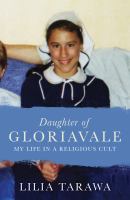 Daughter of Gloriavale : my life in a religious cult / Tarawa, Lilia
Daughter of Gloriavale : my life in a religious cult / Tarawa, Lilia
“When Lilia’s parents fled the cult and its dreadful secrets, Lilia and her many siblings were wrenched away from the only life they knew. Lilia struggled to adapt to life on the outside. Would she be damned to Hell for leaving? How could she learn to navigate this strange place called ‘the world’? And would she ever find out the truth about her grandfather and the cult that had shaped her life?” (Catalogue)
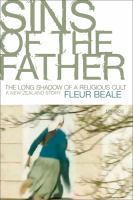 Sins of the father : the long shadow of a religious cult : a New Zealand story / Beale, Fleur
Sins of the father : the long shadow of a religious cult : a New Zealand story / Beale, Fleur
“The disturbing story of the ruthless exercise of power in a New Zealand religious cult. Charismatic, driven and self-righteous, Neville Cooper set up his own brand of Christian utopia on earth- a reclusive community on the West Coast of New Zealand. For the 400 inhabitants of Gloriavale, his word is law – despite his 1995 conviction for sexual abuse. His son Phil Cooper, as headstrong as his father, had to escape. This is a true story of power and control, of abductions and night raids, of hearts broken and those trying to mend.” (Adapted from catalogue)
 Going clear : Scientology, Hollywood, and the prison of belief / Wright, Lawrence
Going clear : Scientology, Hollywood, and the prison of belief / Wright, Lawrence
“Based on more than two hundred personal interviews with both current and former Scientologists–both famous and less well known–and years of archival research, Lawrence Wright uses his extraordinary investigative skills to uncover for us the inner workings of the Church of Scientology.” ( Adapted from Catalogue)
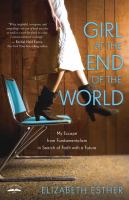 Girl at the end of the world : my escape from fundamentalism in search of faith with a future / Esther, Elizabeth
Girl at the end of the world : my escape from fundamentalism in search of faith with a future / Esther, Elizabeth
“I was raised in a homegrown, fundamentalist Christian group–which is just a shorthand way of saying I’m classically trained in apocalyptic stockpiling, street preaching, and the King James Version of the Bible. In her memoir, readers will recognize questions every believer faces: When is spiritual zeal a gift, and when is it a trap? What happens when a pastor holds unchecked sway over his followers? And how can we leave behind the harm inflicted in the name of God without losing God in the process?” (Adapted from Catalogue)
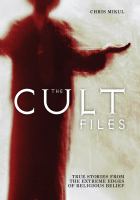 The cult files : true stories from the extreme edges of religious belief / Mikul, Chris
The cult files : true stories from the extreme edges of religious belief / Mikul, Chris
“Explores the history, features and beliefs of thirty cults through the ages. Riveting, sometimes amusing, often horrifying stories show the inside workings of these groups, and trace their history and often their demise. The book includes the Aum Shinrikyo followers, who killed twelve people in a poison gas attack on the Tokyo subway; Scientology (now known for its celebrity followers), which was established in the 1950’s by a science fiction writer; and the Peoples Temple, in which Jim Jones convinced hundreds of followers to commit suicide en masse.” (Adapted from Catalogue)
Christianity in Oceania
Near-death experience in indigenous religions, by Gregory Shushan.
Faithful disobedience : writings on church and state from a Chinese house church movement, by Wang Yi.
